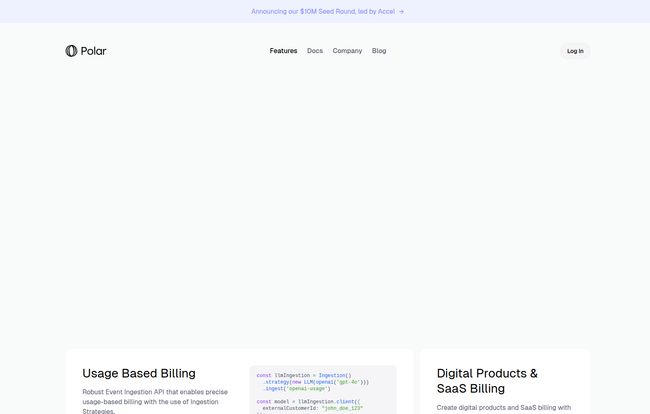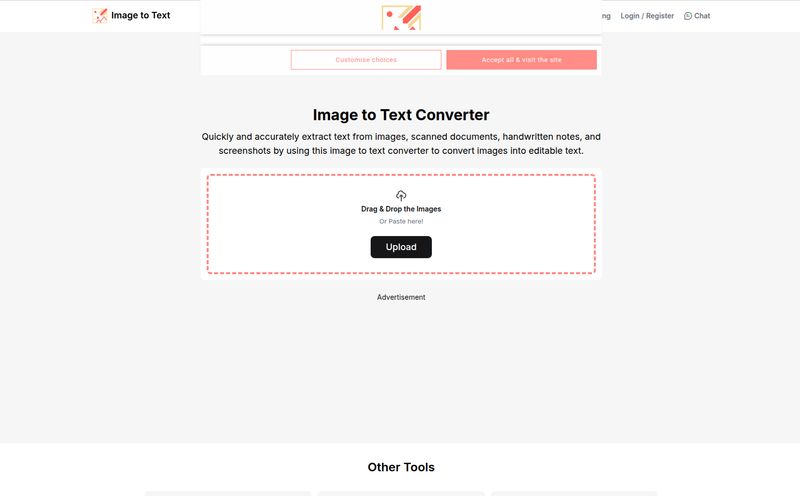If you're a developer, an indie hacker, or anyone trying to sell something on the internet, you've had a run-in with Stripe. It’s the undisputed king of online payments, the 800-pound gorilla in the room. And for good reason! It’s powerful, its docs are legendary, and it basically set the standard.
But sometimes, being the king means you get a little... comfortable. A bit complex. You get the powerful engine, but you still have to build the rest of the car, figure out the dashboard, and then, oh god, deal with the DMV of the internet: sales tax and compliance. It's a lot.
I was scrolling through Twitter the other day, you know how it is, doomscrolling between deploys, and I kept seeing this name pop up: Polar. First, it was a tweet from Guillermo Rauch (Vercel's CEO), then another from the folks at Cal.com. These aren't small names. These are people deep in the developer and open-source world. My curiosity was piqued. Was this just another Stripe clone with a prettier landing page? Or was something actually different going on here? I decided to take a look.
So, What Exactly is This Polar Thing?
On the surface, Polar is a platform to help you get paid. Simple enough. It lets you sell digital products, manage subscriptions, and handle billing. But that’s where the similarities to a basic payment processor end. Polar is positioning itself as a full-stack solution built with a very specific person in mind: the open-source developer.
Think of it less as a direct Stripe competitor and more of a purpose-built layer on top of the payment universe. It’s designed to solve the problems that developers, especially those maintaining open-source projects, actually face. It's about funding, sure, but it’s also about community, benefits, and removing the soul-crushing administrative work that comes with running a project.

Visit EyeGestures
Why All the Buzz? The Core Features That Matter
A slick landing page is one thing, but the features are what make or break a tool. And Polar has a few tricks up its sleeve that genuinely got my attention.
Usage-Based Billing on Autopilot
If you've ever tried to build a SaaS with usage-based billing from scratch, you know the pain. Tracking API calls, data storage, or active users, and then translating that into a correct invoice every month... it's a nightmare of edge cases. Polar seems to have baked this right in. The images show a clean interface for setting up this kind of billing model, which is a huge win for any modern software product. No more wrestling with webhooks and custom logic just to charge for what people use.
A Lifesaver: Being the Merchant of Record
Okay, this is the big one. This is the feature that made me sit up and really pay attention. Polar acts as your Merchant of Record (MoR). If you don’t know what that means, let me translate: they handle the global sales tax nightmare for you. VAT in Europe, state sales tax in the US, GST, etc. It's all on them.
This cannot be overstated. For a solo dev or a small team, navigating international tax compliance is a full-time job. It’s the reason many amazing projects never even try to monetize. Platforms like Paddle and Lemon Squeezy have offered this for a while, but seeing it integrated so cleanly in a developer-first platform like Polar is just... chef's kiss. It’s a massive, boring, and incredibly valuable problem to solve.
Let's Talk Money: The Polar Pricing Model
Alright, so what's the catch? The world-class features have to cost something, right? Polar’s pricing is refreshingly transparent: 4% + 40¢ per transaction.
Now, your first reaction might be to compare that to Stripe's standard 2.9% + 30¢ and think it's more expensive. And on paper, it is. But you're not comparing apples to apples. You're comparing a raw ingredient (Stripe) to a fully-prepared meal (Polar).
| Feature | Polar (4% + 40¢) | Stripe (2.9% + 30¢) + Add-ons |
|---|---|---|
| Payment Processing | Included | Included |
| Merchant of Record (Tax Compliance) | Included | Requires Stripe Tax (~0.5% per transaction) + manual setup |
| Usage-Based Billing | Included | Requires Stripe Billing (starts at 0.5% on recurring) |
| Open Source Funding Tools | Included | N/A (You'd build it yourself) |
When you factor in the cost of Stripe's add-ons for tax and advanced billing, that 4% from Polar starts to look pretty darn reasonable. In my book, that extra 1.1% is a bargain for not having to think about VATMOSS or state nexus ever again.
The Open Source Connection Is More Than Just a Slogan
This isn't just a payment tool with a GitHub-themed logo. The entire platform seems to be woven into the fabric of the open-source community. The social proof speaks for itself.
"The speed at which Polar is executing on the financial infrastructure primitives the new world needs is very important"
- Guillermo Rauch, CEO of Vercel
When the people behind giants like Vercel and Cal.com are excited, you know something is up. Polar seems to offer ways to tie funding directly to your GitHub repository, offering benefits and perks to sponsors automatically. This closes the loop between community contribution and financial support in a way that platforms like GitHub Sponsors or Open Collective are still figuring out. It's not just about donations; it's about building a sustainable business model around your free work.
So, Should You Ditch Stripe for Polar?
This is the million-dollar question, isn't it? And the answer, as always, is: it depends.
If you're a large enterprise with a dedicated finance department that loves wrestling with tax law, you might not need Polar. If your business is primarily brick-and-mortar with a small online component, Stripe's raw power and POS integrations might be a better fit.
But... if you are an indie hacker, a SaaS founder, or an open-source maintainer who just wants to build cool stuff and get paid for it without becoming a tax expert, Polar looks incredibly compelling. It's built for you. It solves the problems that keep you up at night.
And for those already on Stripe? Polar's site mentions an "Easy Stripe-migrate" path. That’s smart. They know who their audience is and what the biggest friction point is for switching. Removing that barrier is a critical move that shows they understand their users' reality.
I think Polar is definately one to watch. It's not just building tools; it's building a solution for a specific, and growing, part of the creator economy. It’s taking the best parts of the modern payment stack and wrapping them in a package that finally respects a developer's most valuable asset: their time.
Frequently Asked Questions about Polar
- What is Polar?
- Polar is a financial platform designed for developers, especially in the open-source community. It provides tools for SaaS subscriptions, digital product sales, and usage-based billing, and most importantly, acts as the Merchant of Record to handle global sales tax.
- How much does Polar cost?
- Polar's pricing is a flat 4% + 40¢ per transaction. This fee includes payment processing, tax compliance, and all of its core features without any hidden monthly costs.
- Is Polar a good alternative to Stripe?
- For many developers and indie SaaS founders, yes. While Stripe is a raw payment processor, Polar is an all-in-one solution that handles billing, checkouts, and complex tax compliance, making it a powerful and time-saving alternative.
- What does 'Merchant of Record' (MoR) mean?
- Being the Merchant of Record means that Polar takes on the legal responsibility for all transactions. They are the ones who officially sell to the end customer, which means they are responsible for collecting and remitting sales taxes (like VAT) around the world. This is a huge administrative relief for sellers.
- Can I move my existing business to Polar from Stripe?
- Yes, Polar promotes an "Easy Stripe-migrate" process, suggesting they have tools and support to help you migrate your existing customers and subscription data over to their platform.
- Who is Polar best suited for?
- Polar is ideal for open-source maintainers looking for sustainable funding, indie hackers building SaaS products, and small to medium-sized businesses that want to sell digitally worldwide without managing the complexities of global tax law.



